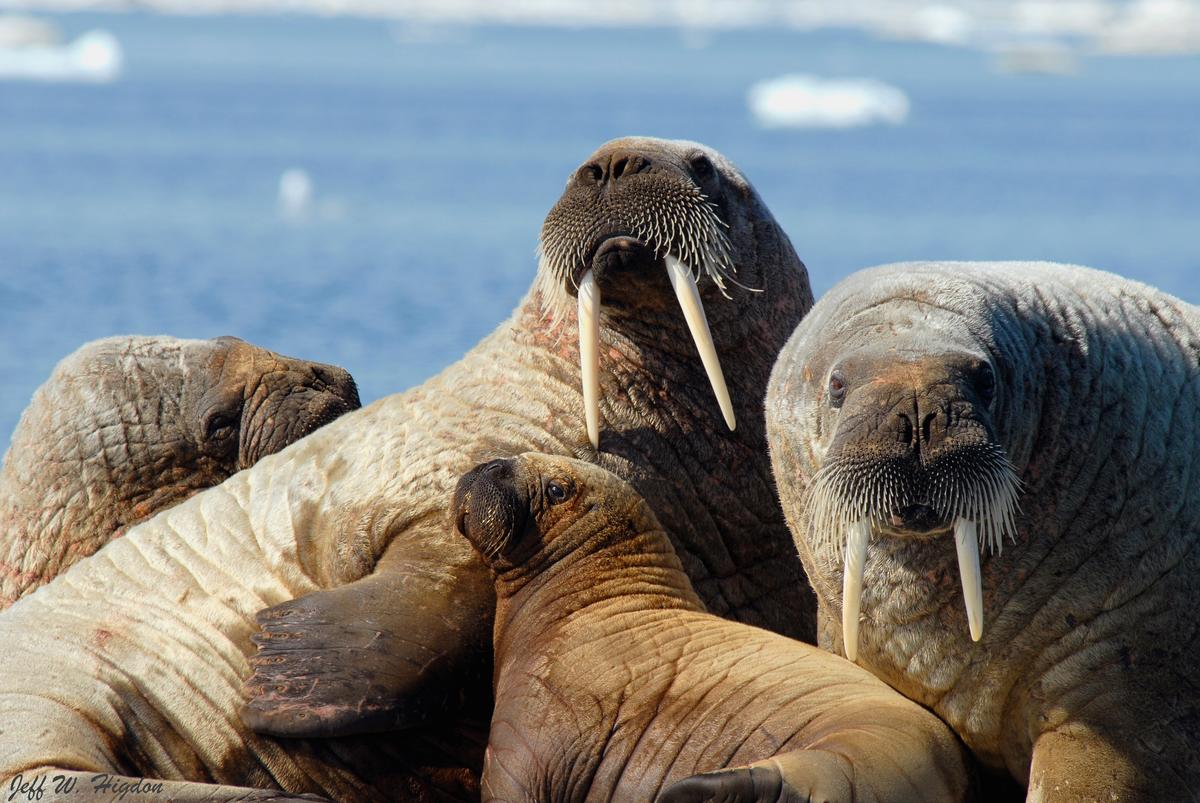New WWF project asks Canadians to help count walrus from space
Research will help show how walrus are being impacted by the climate crisis
TORONTO, November 22, 2021 – With the Arctic warming at three times the rate of the rest of the world, the climate crisis is having a dramatic impact on species dependent on sea ice, such as Atlantic walrus. Now, Canadians can see the effect climate change is having on walrus for themselves by taking part in WWF’s Walrus from Space research project on World Walrus Day (Nov. 24), using satellite imagery to count the number of walrus that haul out onto land.
Canadians will also have another opportunity to help safeguard walrus and other northern species by supporting WWF-Canada’s Arctic Species Conservation Fund on Giving Tuesday (Nov. 30).

About Walrus from Space
WWF (World Wide Fund for Nature) and British Antarctic Survey (BAS) are asking the public to become “walrus detectives” and help contribute to conservation science by searching for walrus in the thousands of high-resolution satellite images provided by space and intelligence company Maxar Technologies’ DigitalGlobe. It’s hoped that half a million people from around the world will participate.
From the comfort of their own homes, aspiring conservationists and nature enthusiasts can study satellite pictures online, spot areas where walrus haul out onto land, and then count them. The data collected in this census of Atlantic and Laptev walrus will give scientists a clearer picture of how each population is doing without disturbing the animals. Scientists can then explore how their numbers change in comparison to sea-ice loss and their changing environment over time.
Studying walrus in Canada
To best safeguard Canada’s walrus populations, WWF-Canada is working to learn more about walrus haulouts (a group of walruses on land or ice) and minimize disturbances though its Arctic Species Conservation Fund.
Since the fund was launched six years ago, it has supported more than 80 projects, including mapping all known walrus haulouts in Canada, supporting Inuit Qaujimajatuqangit (Inuit knowledge) workshops on walrus conservation, and piloting the use of satellite imagery to study walrus on the aptly named Walrus Island in northern Hudson Bay — a project that influenced the new Walrus from Space initiative.
Some of the ambitious walrus research taking place this field season include:
- Looking for evidence of microplastics in walrus to investigate long-standing community concerns around contamination of traditional food sources.
- Observing walrus behaviour in haulouts with information from satellites and stationary camera traps. Working with research technicians from Coral Harbour, NU, this community-led project will document reactions to disturbances like passing ships as well as habitat use at different times of day.
Facts about climate change and walrus
- The Arctic is warming almost three times faster than the rest of the world. The sea ice that walrus depend on is melting beneath them. The full impacts of climate change on walrus are complex.
- As sea ice is lost, the Arctic is becoming more accessible to shipping traffic and industrial development. Noise from these sources can disturb and displace walrus and force them to abandon preferred haulouts.
- A walrus haulout is a piece of ice or land, such as ice floes and beaches, where walrus go to rest in between feeding dives, to molt and to give birth. Walrus generally prefer to haul out on snow-covered ice floes rather than on land. Walrus have always used land-based haulouts for parts of the summer, when sea ice is at a minimum.
- In recent years, walrus have begun to haul out on land in larger groups and go to sea to forage from there, because the sea ice in some areas has retreated to waters that are too deep for them to feed. Resting on land, as opposed to sea ice, forces walrus to swim further and expand more energy to reach their food sources — which are also being impacted by the climate crisis.
- Overcrowded beaches can have fatal consequences; walrus are easily frightened, and when spooked they stampede toward the water, trampling one another in their panic. Walrus calves are particularly vulnerable to these deadly stampedes.
- Walrus (as a species) are listed as vulnerable on the IUCN Red List. Atlantic walrus are listed as Near Threatened and have been assessed as a species of Special Concern by the Committee on the Status of Endangered Wildlife in Canada.
How the public can get involved:
- Become a walrus detective by searching for walrus in satellite images. All you need is access to a computer or tablet and an internet connection to take part.
- Make a Giving Tuesday donation to fund Arctic species research: From now until midnight on Nov. 30, 2021, gifts will be matched to make double the impact for Arctic species conservation. Visit ca/givingtuesday.
Brandon Laforest, WWF-Canada’s senior specialist for Arctic species and ecosystems, says:
“Walrus are already experiencing impacts from the climate crisis. Over the long term, this loss of sea-ice habitat, changes to their food web and an increase in human disturbance could result in significant population declines. The good news is the more we know about walrus and their habitat, the more we can do to protect their haulouts and safeguard their future in a rapidly changing Arctic. The information we gather with the help of the public for projects like Walrus from Space, coupled with the knowledge of Inuit-led research projects through WWF-Canada’s Arctic Species Conservation Fund, will be crucial to our conservation efforts.”
For more information, contact:
About World Wildlife Fund Canada
WWF-Canada is committed to equitable and effective conservation actions that restore nature, reverse wildlife loss and fight climate change. We draw on scientific analysis and Indigenous guidance to ensure all our efforts connect to a single goal: a future where wildlife, nature and people thrive. For more information visit wwf.ca.

